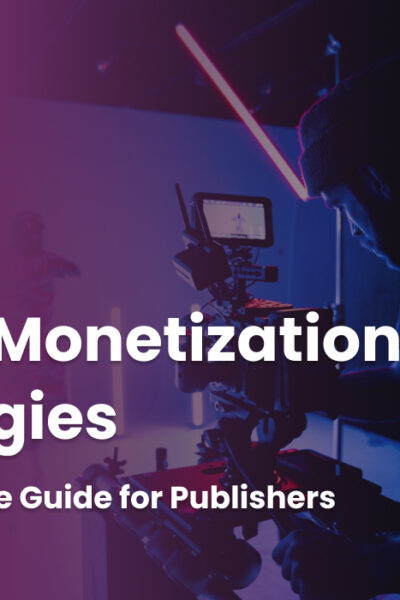What led you to start working in the ad tech industry?
While I’ve been immersed in the digital media and advertising sector for over 20 years and have considered myself a technocrat since my early Peace Corps days as a small business systems advisor in Pakistan and Botswana, I first entered into the industry in 1998 when I worked on various content management technologies. Fast forward to 2008 where, for me, content management evolved into an ad supported service, and I made the shift towards ad networks and their technology.
How did this lead you to find VRTCAL?
In 2016, I recognized a need for more efficient technologies within the sector and felt compelled to develop something better. At this time, mobile application display advertising became a focus for me within the industry, and I created the VRTCAL SSP to provide a proprietary tech platform. Since inception, we’ve continued to innovate our offerings and remain committed to providing brands, publishers and app developers with best-in-class technology coupled with unparalleled customer service.
What does a typical day look like for you?
With business covering various time zones, I start my days early and monitor late. I always begin each day with the initial heart-beat of our operations — reviewing data and reports. Then, after sorting through emails, I take the time to prioritize my list of to-dos before making my commute to the office. Once settled and my to-do list has been transferred to my notepad, I make a point to check in with my various team leads via Slack and remain in close contact with each one throughout the day on any moving items or projects.
Throughout the day, I have my hand in all aspects of the business including monitoring ops through our internal dashboards, marketing and public relations, publisher and advertiser sales, engineering, strategy and compliance.
I make sure to carve out time for exercise before making the commute home and capping off my day with reviewing our data and reports once more.
What does your work setup look like? (your apps, productivity tools, etc.)
I use my laptop primarily, supported by desktop displays. For our daily monitoring and reporting, I leverage our extensive internal systems. I also rely on the following tools day-to-day: MS Office, notepad, Google, Apple, SalesForce, DocuSign, Dropbox, AWS, Constant Contact, Github, Pixalate, QBO, Slack, Skype, Trello, Mac Stadium, TestRail and 42matters.
What’s the problem that you’re passionately tackling with VRTCAL at the moment?
We are currently working on improving efficiencies for our publishers and advertisers. To support this effort, we recently announced our mobile SDKs along with our self-serve and display mediation services to support mobile app developers and help increase revenue for our partners. We are also looking at ways to increase transparency as well as compliance for personal information within our sector as both are important for furthering efficiency and bridging the gap between mobile publishers and advertisers.
What’s the core product that you offer which can resolve this?
The VRTCAL SDKs are the foundation of our solutions and give power to the publishers to take control of their revenues. While there are still too many resource and revenue inefficiencies in our sector, the VRTCAL SDKs allow publishers to simplify their ad stack by unifying all advertiser types, which is done with our very efficient and proprietary architecture. Additionally, the VRTCAL platform provides publishers the ability to connect directly with advertisers through a variety of integration methods.
How do publishers maximize their video or in-app mobile advertisements in order to bring higher CPM’s?
CPMs should not be the sole determining metric. For example, do you want to deliver 100,000 ads at $5.00 for $500, or would you rather deliver 110,000 ads at $4.75 for $522.50? Publishers need to be able to literally unify their mediation to maximize their revenues and minimize resources.
With an efficient mediation, you can then think about CPMs. If publishers are able to more directly connect with advertisers, they can increase the net CPMs they are paid because of the removal of unnecessary participants. Publishers need to be able to integrate directly with advertisers in a more efficient manner.
How viable are marketplaces in brand safety and in delivering mobile advertising?
Marketplaces can be very positive for brand safety and delivery, if done securely and efficiently. At a minimum, the marketplace needs to be TAG certified. There are two sides to brand safety. The marketplace should have systems in place to safeguard the publisher and enforce their wants and protections. On the other side of the equation, advertisers need to be assured of the inventory quality and that their ads are being served as intended. A marketplace needs to have the technology to effectively manage this ecosystem.
Do you have any advice for ambitious digital publishing and media professionals looking to build their own product?
Don’t just simply guess that your service or technology will derive revenues or provide for a need. You have to know it will.
Content from our partners
At VRTCAL, I chose to hire only local, specifically qualified engineers and have been very pleased with the decision. The searches can be longer, but I believe the rewards can be greater.
Lastly, personality is everything when hiring. Focus on building a team of pleasant and happy people. I find these types of people to be more cohesive, productive and innovative.












